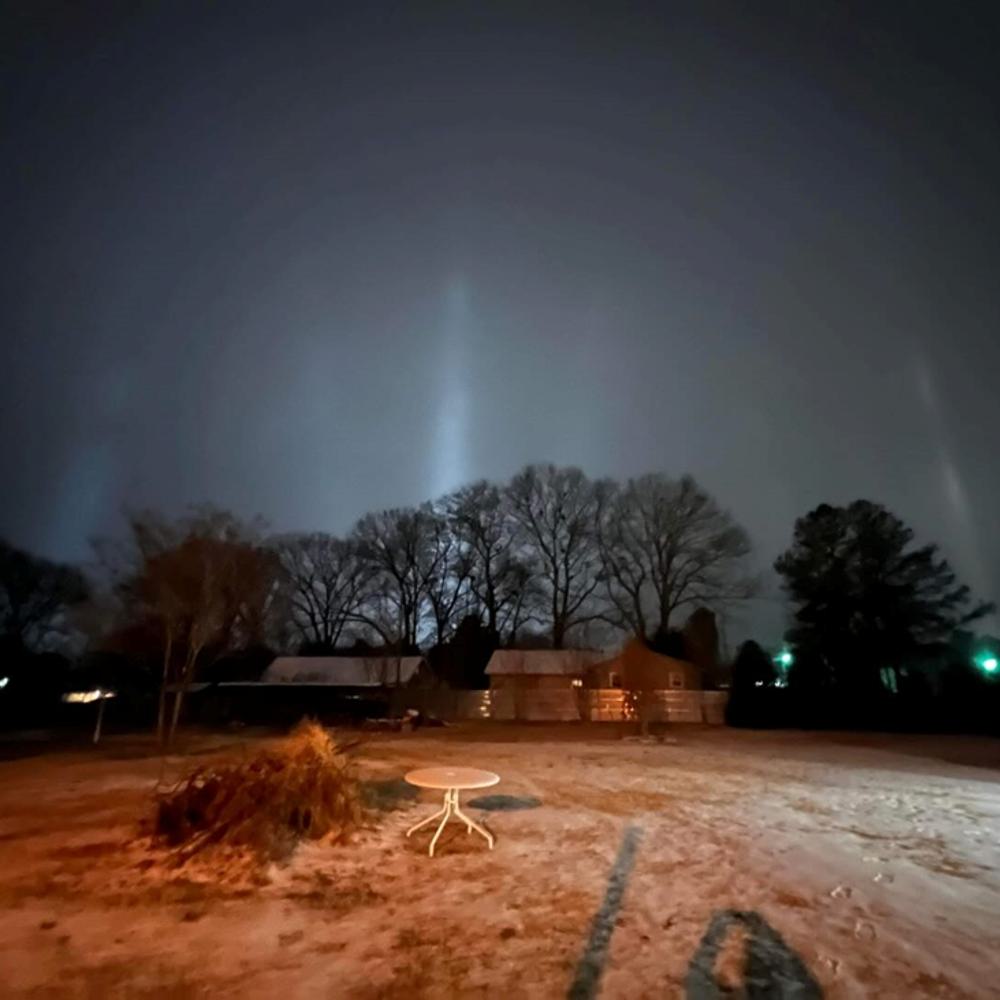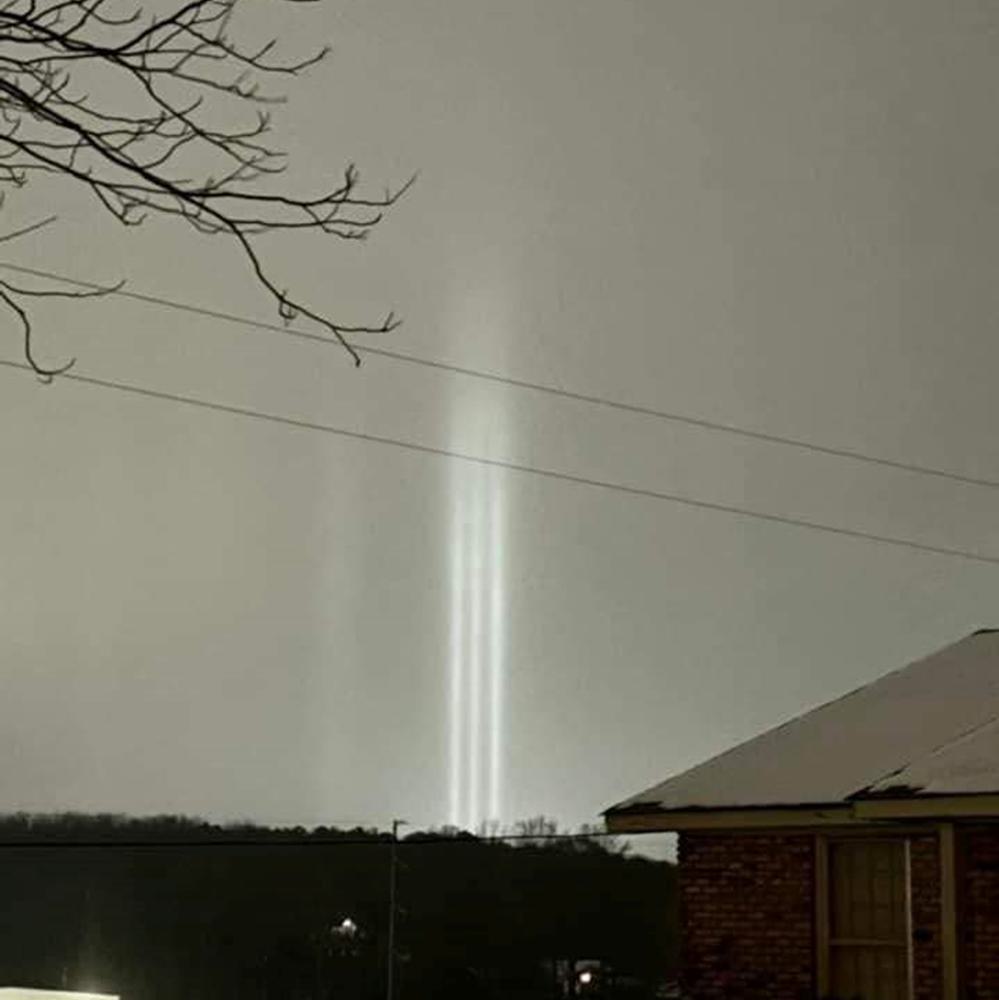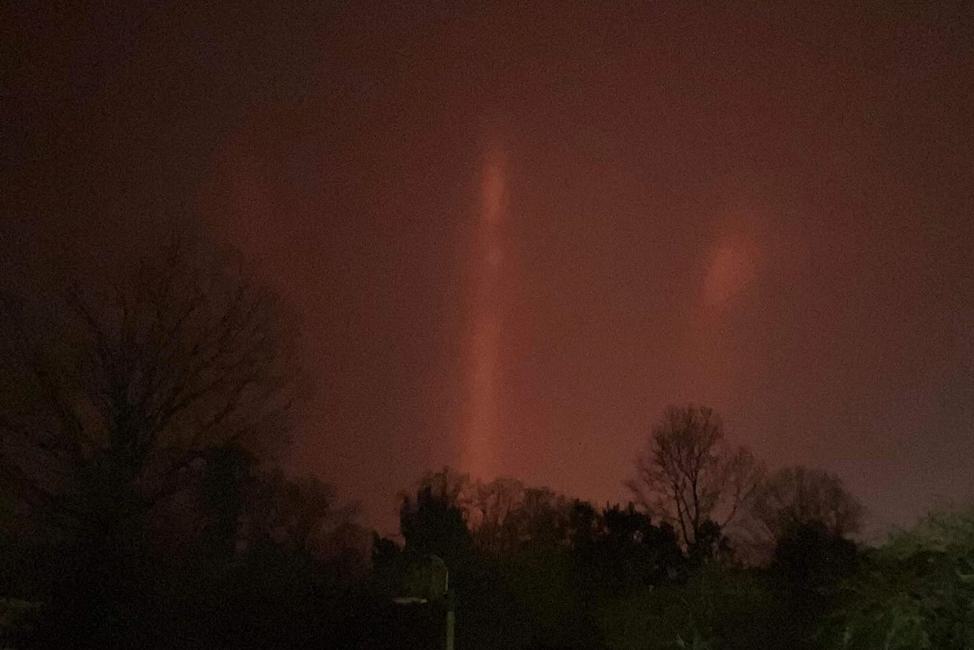Alaska, Canada, northern U.S. states and other high latitudes in the northern hemisphere see aurora borealis during the winter. Tourists even travel north to see "the great northern lights." The auroras are a bucket list item.
Antarctica, New Zealand, Australia and other lower latitudes in the southern hemisphere have aurora australis during winter, "the great southern lights."
Alabama folks cannot see the auroras. We are just too far south. But thousands in Alabama thought they were seeing auroras when they saw something similar Monday night. And they are likely to be seen again Tuesday night.
As a winter storm, with snow, sleet and ice, entered Alabama Monday night from the north and west, a phenomenon occurred that was a winter light show from above. Some folks thought someone with a spotlight was pointing light beams into the skies. Others thought aliens had descended onto their neck of the Alabama woods. Others thought the great northern lights had come this far southward.
What Alabama folks saw was a different meteorological occurrence than the aurora. It is referred to as "light pillars." They are defined as an astronomical optical phenomenon in which a vertical light beam appears to extend above or below a light source. The effect is created by the reflection of light from ice crystals suspended in the atmosphere, sometimes occurring in high-altitude cirrus clouds. The light could come from the sun if it is near or slightly below the horizon. This type of light pillar is called a sun pillar or solar pillar. Light pillars can also be caused by the moon or earthly light sources, such as streetlights or commercial lighting.
Notice that the definition uses the words "appears" and "effect." That's because the light pillar is an optical illusion. It does not exist except in eyesight. If an airplane or drone flew to and through the light pillar, they would find nothing there. In this way, a light pillar is similar to a rainbow. Neither exists except in the eye of the beholder.
A pillar is classified as a type of halo. The ice crystals causing light pillars are usually flat flakes that line down horizontally as they fall through the air. Each flake acts as a tiny mirror that reflects light sources.
Unlike an actual light beam, a light pillar is not physically located above or below the light source. Its appearance as a vertical line is an optical illusion resulting from the collective reflections off of the ice crystals.
Alabama folks, with our lakes and rivers, are familiar with this phenomenon in a different context. It is similar to viewing a light source on a body of water. Ripples on the surface of the water reflect the light source in many directions, and those that happen to be aimed at the viewer combine to form a bright line pointing toward the light source.
Viewing light pillars is like seeing the harbor lights reflected in the water. In Alabama, we know exactly what and why that is.
Will you venture outside in the cold tonight to catch a glimpse of "Aurora Bora Bama?"
"The heavens declare the glory of God, and the skies show His handiwork."


Jim Zeigler is a former Alabama Public Service Commissioner and State Auditor. You can reach him for comments at ZeiglerElderCare@yahoo.com.
Don't miss out! Subscribe to our newsletter and get our top stories every weekday morning.










